Last updated: December 7, 2017
Article
The Beginnings of the Golden North Hotel
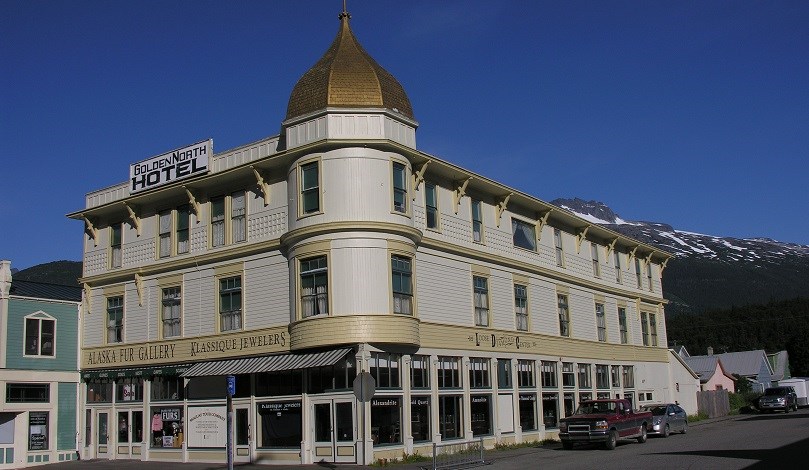
NPS photo
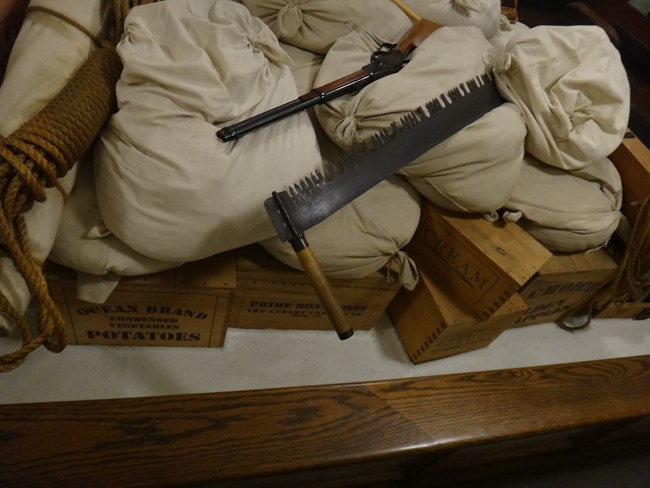
NPS photo
"Although the appearance of this store is not quite so pretentious as the name, a considerable business was done here during the season. Tradesmen are very sanguine as to the future, and remarkable energy is being exercised in the effort to cater to prospectors on their way to the gold fields.”
Indeed the Klondike Trading Company grew from humble beginnings to become a prosperous brick and mortar, (or plank and nail) store. In a photograph from June of 1898 the Klondike Trading Company stood on State Street and Third Avenue as one of the few two story buildings in Skagway at the time. In 1899, the company advertised in the Daily Alaskan, proclaiming, “First line of groceries in Alaska and blankets and robes of all kinds, sizes and prices.” This building did a thriving business in groceries and dry goods while another establishment, the Golden North Hotel opened in early 1898.
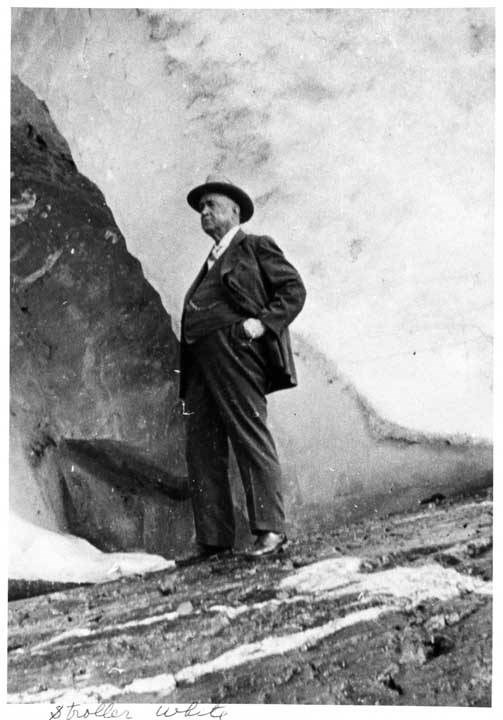
Alaska State Library, Portrait File, Photographs, ASL-P01-3936
"Entered the first hotel he came to and, with an optimism born of crass ignorance, asked the man behind the desk for a room. What he had in mind was a single room or, in case of extremity, sharing a double.
“We have a room,” said the man. “Gimme a dollar and go up both flights of stairs. The room is at the top of the last flight. Take the first bed that isn’t occupied.”
The Stroller followed instructions, found a cot just inside the door of the room mentioned, rolled into it and went to sleep. He slept soundly; indeed, he slept so soundly that he did not hear any of his seventy-eight roommates as they came in. But that was the number he counted, in the dim light that trickled though a small and grimy skylight, when morning came. There were tiers of bunks four deep around the walls, while the entire floor space, which was big enough for a skating rink, was thickly sprinkled with cots.”
The Golden North on the other hand advertised, “Large Comfortable Rooms, No BAR—No Bunks, Patronage of Business Residents Solicited.” The respectable hotel was nevertheless the backdrop to some excitement in town. On November 18, 1898 the Skaguay News reported:
"Yesterday evening about 5 o’clock, six holes were shot in the air on Bond Street. Two men, one named Rinehart, the other an unknown, had quarreled in the room of a woman named Nash, at the Bay View hotel, and during the trouble Rinehart is said to have used a heavy gun with telling effect on the unknown’s head. The wounded man and woman fled from the house and elicited the aid of Marshal Tanner. The latter started for the Bay View and met Rinehart on the sidewalk in front of the Golden North hotel. Instead of submitting quietly to arrest Rinehart hastily drew a gun and fired three shots at the marshal, then started to run. Tanner returned the courtesy by firing three shots at the fleeing man. Of the six shots fired all were spent in the air except one, which smashed through a window in the Golden North, spoiling the window, but doing no further damage. Up to the hour of going to press, Rinehart had not been apprehended, but Marshal Tanner is confident of his capture very soon."
The drama of shots fired and a fight over a woman sounds like something out of a Robert Service poem. The editor of the paper certainly accentuated the drama of a panicked Rinehart who “hastily drew a gun and fired three shots” and the suave Marshal Tanner “who returned the courtesy.” The reporter continued to add dramatic flourishes, depicting Rinehart as a “gentleman of leisure.” The excitement of a shootout and a broken window was newsworthy, but the Skagway community was also home to growing families and less dramatic happenings.
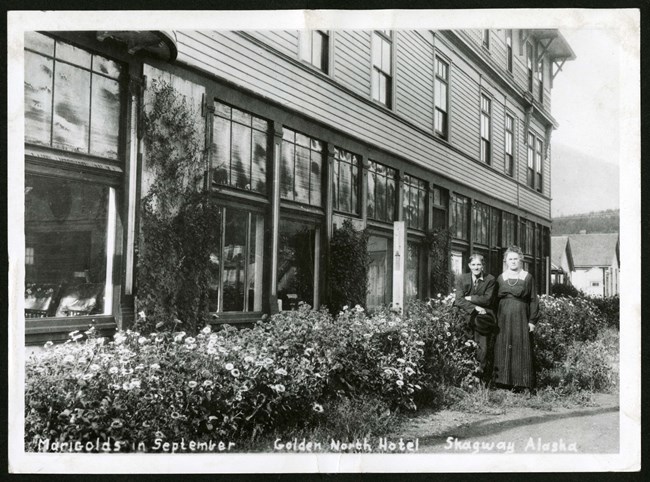
National Park Service, Klondike Gold Rush National Historical Park, George & Edna Rapuzzi Collection, KLGO 59783d. Gift of the Rasmuson Foundation.
News about the Whitten family and the Golden North appeared a couple more times. In December of 1899 Thomas Whitten recommended that business owners shovel their walkways after a visitor slipped and fell in front of the St. James Hotel. Witten was also a U. S. Deputy Surveyor and drew a map of Dyea in August 1899. But the young family did not remain in Skagway for long. Sadly, Thomas Whitten died on January 11, 1900 when he fell from a gangplank on Moore’s Wharf into ice cold water. He may have died from shock. His wife returned to California where she scattered his ashes. The Golden North remained open for business. After Whitten’s death the housekeeper, Mary Falk, took charge of the hotel, while one of the owners, Ed Forman returned to town. The hotel was rented to the military in 1904. In 1908 two business partners Ed Foreman and George Dedman bought the old Klondike Trading Company and moved the building to its current location on the southwest corner of 3rd Avenue and Broadway. The Golden North Hotel also moved into the same building.
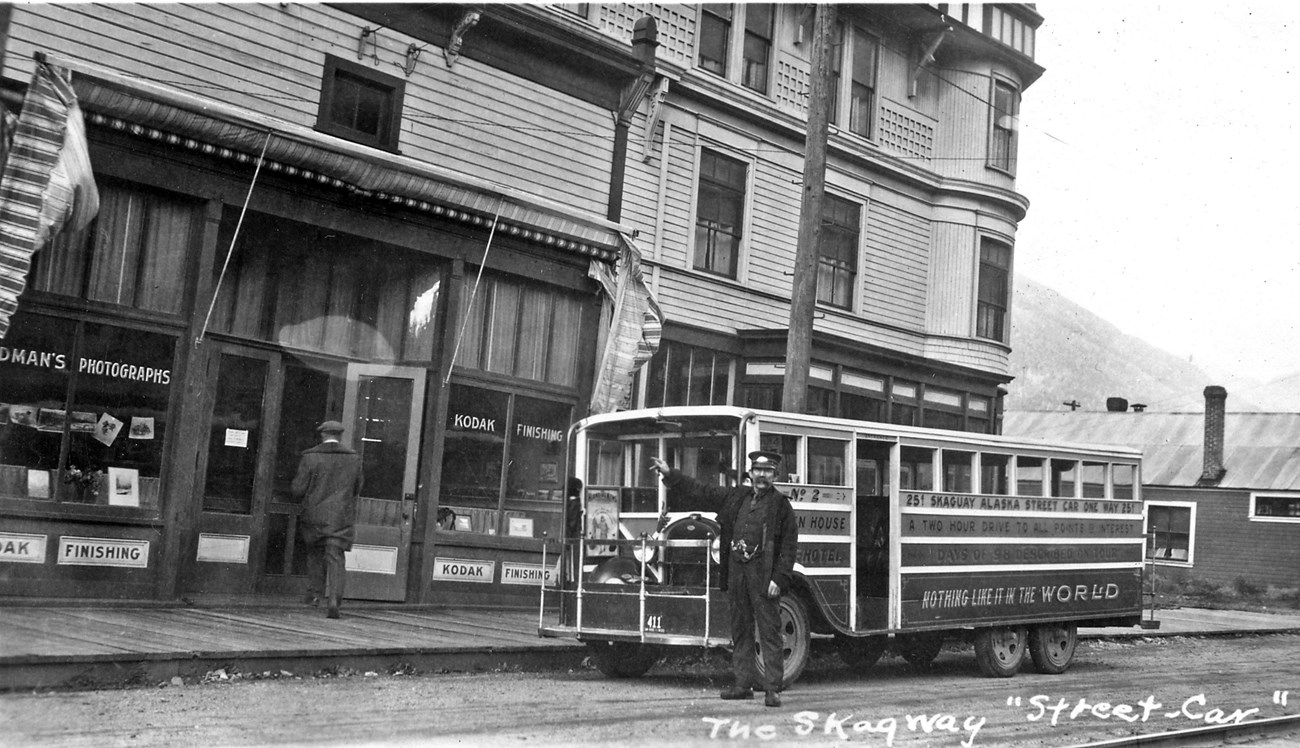
National Park Service, Klondike Gold Rush National Historical Park, George & Edna Rapuzzi Collection, KLGO 44778. Gift of the Rasmuson Foundation.
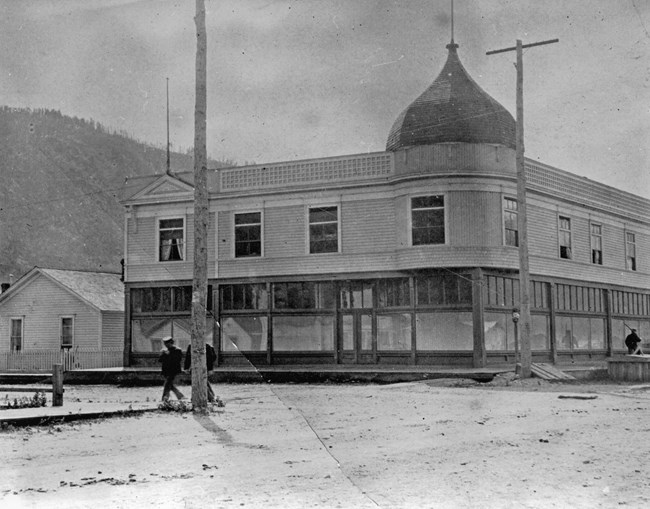
Alaska State Library, William E. Hunt collection, PCA 155
About This Article
This article was researched and written by Susannah Dowds, Assistant Historian at Klondike Gold Rush National Historical Park, in July, 2016. It was originally given as a KHNS radio talk. Information was supplied by the following sources:Advertisement, Daily Alaskan, February 3, 1899.
“The Air Punctured by Six Leaden Balls,” Skaguay News, November 18, 1898.
National Park Service, Klondike Gold Rush National Historical Park Library, Frank La Roche Album, KLGO SE-10-212.
“Reduced to Dust,” Daily Alaskan, February 24, 1900.
“Remains Go South,” Daily Alaskan, January 13, 1900.
Spude, Robert L., Skagway, District of Alaska 1884-1912 (Alaska Regional Office: Cooperative Park Studies Unit and University of Alaska Fairbanks), 144
“Thomas Whitten Falls to His Death,” Daily Alaskan, January 11, 1900.
White, Stroller, Klondike Newsman, ed. R.N. DeArmond (Skagway: Lynn Canal Publishing, 1989), 9-10.
U.S. Census, Skagway, 1910.1930.
